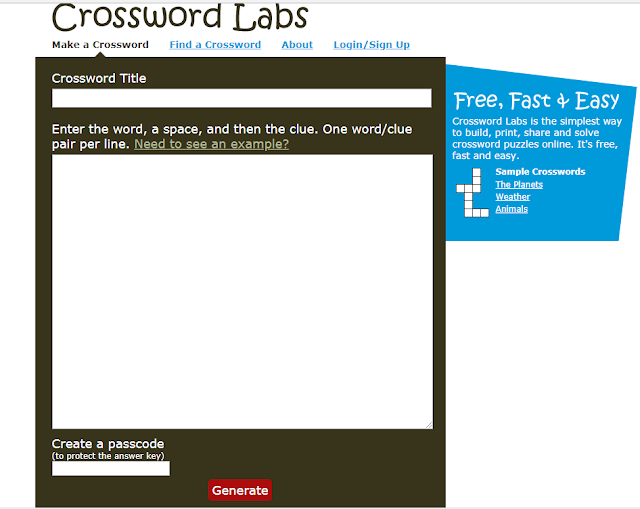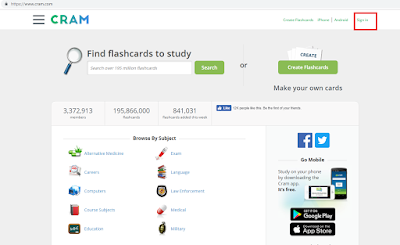Cram lesson
Lesson 2
Age group: 6th Form
Grammar focus: Present simple (aff)
Vocabulary focus: vocabulary related to celebrations
Physical location: school facilities
Topic: celebrations/festivals/traditions
Warmer:
The teacher will ask the students what they did at the weekend having into account that on 31st October it was Halloween and that tradition/celebration/festival from the USA is being adopted in Argentina.
He/she will ask whether they wore customs, whether they went to collect candies with some friends around their neighbourhood, whether they gathered in someone's house to listen to some horror stories or some tails, etc.
Then, the teacher will ask them what other traditions and/or celebrations they know and he/she will write them on the board.
Web:
(On the computing room)
The teacher will ask them to sit in pairs and/or small groups. There must be 10 groups.
Then, they will have to choose one of the ten celebrations from a site they are going to explore.
Here are the 10 celebrations:
- Holi festival
- Burning Man Festival
- The Carnival in Rio de Janeiro
- La Tomatina
- The Carnival of Venice
- Oktoberfest
- Loy Krathong & Yee Peng Lantern Festivals
- St Patrick’s Day
- Running of the Bulls
- Mardi Gras
The link provided by the teacher has the information of every celebration.
Here it is:
https://www.pandotrip.com/top-10-celebrations-around-the-world-1937/
They will collect that information to use it later with a tool called "Cram".
Here they have a link of a tutorial for the tool:
(One member of each group will have to create an account on the tool to do the activity)
After reading about the chosen celebration, they will gather that information to make a brief description about it (where it takes place, when, maybe how long it lasts, etc.) and they will create a flashcard for their corresponding celebration using the tool with the name and the description.
The idea is to share the flashcards on one set.
(The teacher will provide feedback, assess the students and help them in case they need to edit the flashcards).
What's next:
Now, each pair/group will talk about their celebrations and then the teacher will test them through the test option from the tool.
Finally, if there is time; they will spend the rest of the class using the tool with the game option to see how much they remember of every celebration.
The idea is that they learn about celebrations around the world and also that they work alone and collaboratively.
Evaluation criteria:
- Did the students provide the information required by the task? How accurate were they?
- Did the students make mistakes whike gathering the information of the celebrations? If so, how serious were them?
- What word or expression did they find difficult to understand? Were they able to work out those meanings on their own or required the teacher's help and/or the use of online dictionaries?
Theoretical
Framework
Triple E framework by by Liz Kolb
This framework provides specific guidance for
teachers in integrating meaningful technology mindfully in their classroom
activities. This theoretical framework encourages teachers to go beyond an
instrumental use of technology and consider how it can extend and enhance
learning goals.
The framework is based on three components: Engagement,
Enhancement and Extension.
1.
Engagement: the teacher needs to motivate or engage students to
start the learning process through the use of technology and prove them that
technology can be use not only to have fun but also to learn. Technology can
promote a change in the students from passive to active social
learners.
2.
Enhancement: this component focuses on the added value of
using technology tools which goes beyond engagement in content. It refers to
how technology can aid, assist and scaffold learning in a way that could not be
achieved by traditional methods.
3.
Extension: The idea is that the teacher becomes able to
connect what happens in the classroom with the real world and through the use
of technology the teacher can make these connections. Technology allows the
students relate the classroom activities to their everyday lives.
The use of technology can promote the idea of working in an online project in a collaborative way even with distant partners.
The use of technology can promote the idea of working in an online project in a collaborative way even with distant partners.
The Pedagogical Implications of Web 2.0 (A new way of Learning and Teaching)
Face-to-face instruction often assumes the teacher’s ownership of knowledge and transmission of it to the learner, while online learning should be built with the student at the centre of the learning environment. A social-constructivist approach helps focus resources and support for learners to enable them to actively use new material rather than passively absorb information presented to them.
Social constructivism presumes that learning is a process of individual interpretation and meaning making based on a variety of experiences, and that knowledge is constructed from these experiences (Jonassen, 1991). Additionally, social-constructivist learning processes state that social interaction or social constructivism is not merely supportive of but an essential ingredient in cognitive development (Duffy & Cunningham, 1996).
This approach values authentic activities that allow learners to explore, discuss, and construct concepts and relationships relating to real-world problems and projects.
Collaborative learning is a key concept between instructors and students, and “two-way interaction is critical in learning a second language” (Ariza & Hancock, 2003, p. 2).
Learners Teach to Learn
The ability of learners to manage their own learning is a key competency that studies have shown to be related directly to successful participation in online learning environments. Porter and Sturm (2006, p. 105) used the following self-management survey to evaluate learners competency level by asking them about how well they thought they did in the these areas:
1. Staying focused or concentrate on what they are doing
2. Sticking with a task or problem
3. Figuring things out for themselves before asking for help
4. Asking for help when they're stuck
4. Asking for help when they're stuck
5. Making decisions for themselves
6. Solving problems by themselves
7. Feeling they can do things and accomplish things
8. Organizing their work and life
9. Learning things on their own
10. Setting goals for themselves
11. Managing their time
12. Evaluating their own progress and how they are doing
13. Trying or learning new things
14. Learning on their own without help
15. Accepting responsibility for themselves
16. Seeking constructive criticism of their work
17. Trying to actively try new things
There are
three different types of coursebooks:
Global (intended for use in any part of the world by
learners of a specific foreign language level and age range).
Localised (a global coursebook adapted or localised to make it fit with the learners' background and a national curriculum).
Local (specifically produced for a country or region sensitive to learners' background, draws on a national curriculum).
Localised (a global coursebook adapted or localised to make it fit with the learners' background and a national curriculum).
Local (specifically produced for a country or region sensitive to learners' background, draws on a national curriculum).
Contextualization: in this lesson there is a context provided by the teacher in the introduction of celebrations and for the activity there is a context for each tradition.
Linguistic contrasts: learners reflect on the form, meaning, and use of the target language linguistic features by encouraging contrastivity among the celebrations.
Intercultural reflection: there is a clear difference between local celebrastions and in this case celebrations from all over the world. Besides, there is a confrontation between C1 and C2 (target culture)
Facilitation of learning: since the students will have to gather information provided by the link, they will have to explain in their own words what they consist of.
Reference:
Linguistic contrasts: learners reflect on the form, meaning, and use of the target language linguistic features by encouraging contrastivity among the celebrations.
Intercultural reflection: there is a clear difference between local celebrastions and in this case celebrations from all over the world. Besides, there is a confrontation between C1 and C2 (target culture)
Facilitation of learning: since the students will have to gather information provided by the link, they will have to explain in their own words what they consist of.
Reference:
- Banegas, López-Barrios, Porto, Waigandt. Adapting to meet diverse needs in ELT
- Sturm, Kennel, McBride, Kelly. Chapter XX The Pedagogical Implications of Web 2.0. Michael Thomas. Handbook of Research on Web 2.0 and Second Language Learning
- Lopez Barrio, M. and Villanueva de Debat, E. (2018). [online] E.edim.co.
Available at: https://e.edim.co/92818/Lopez_Barrios_Villanueva_de_Debat_2014_Global_vs._Local_Does_It_Matter.pdf?



Comentarios
Publicar un comentario